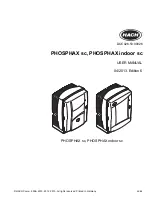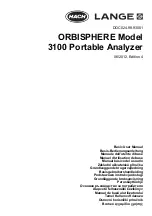
20
reading and number of readings included in the average
are visible in the lower right corner. The current
Rod
Length
and
Soil Type
are shown in the lower left corner.
Taking Readings
Push the rods into the soil. When taking a measurement, it
is important that the rods be fully inserted into the soil. If
not, part of the sampling volume will be composed of air
and the reading will be inaccurately low. For the same rea-
son, the probe should be inserted with a steady, downward
pressure. If the rods are wiggled into the soil, air pockets
can be created adjacent to the rods that will result in low
readings. The probe should not be struck with a hammer or
other blunt instrument as this can cause damage to the in-
ternal electronics. Also, care should be taken to ensure the
rods are inserted as parallel to one another as possible.
This will not have a large affect on the reading but will
decrease the chances the rods will be bent or broken. Like-
wise, it is best to avoid areas with rocks or other material
that can cause the rods to deflect or bend. If the ground is
especially hard or compact, you can use a Pilot Hole mak-
er (item 6430PH) to make
3”
holes to aid in starting the
insertion of the probe rods.
Press the
READ
button to initiate the measurement se-
quence. The reading should appear almost instantaneously.
If the display does not detect the sensor, it will display
dashes. Check that the sensor is securely attached (see p.
22).
Note:
The TDR rods are manufactured from type 303
stainless steel and are designed to bend if non
-
vertical
force is applied to them. This serves to protect the TDR
block electronics from potential damage that could be
caused by excessive force.
















































